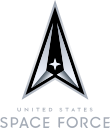
Project Gemini
1961–1966 US human spaceflight program / From Wikipedia, the free encyclopedia
Dear Wikiwand AI, let's keep it short by simply answering these key questions:
Can you list the top facts and stats about Project Gemini?
Summarize this article for a 10 years old
Project Gemini (IPA: /ˈdʒɛmɪni/) was NASA's second human spaceflight program. Conducted between projects Mercury and Apollo, Gemini started in 1961 and concluded in 1966. The Gemini spacecraft carried a two-astronaut crew. Ten Gemini crews and 16 individual astronauts flew low Earth orbit (LEO) missions during 1965 and 1966.
 | |
| Program overview | |
|---|---|
| Country | United States |
| Organization | NASA |
| Purpose |
|
| Status | Completed |
| Program history | |
| Cost |
|
| Duration | 1961–1966 |
| First flight |
|
| First crewed flight |
|
| Last flight |
|
| Successes | 10 |
| Partial failures | 2 (Gemini VIII and IX-A) |
| Launch site(s) | Cape Kennedy |
| Vehicle information | |
| Crewed vehicle(s) | Gemini capsule |
| Launch vehicle(s) | |
| Part of a series on the |
| United States Space Program |
|---|
  |
|
Human spaceflight programs |
|
National security space |
Gemini's objective was the development of space travel techniques to support the Apollo mission to land astronauts on the Moon. In doing so, it allowed the United States to catch up and overcome the lead in human spaceflight capability the Soviet Union had obtained in the early years of the Space Race, by demonstrating mission endurance up to just under 14 days, longer than the eight days required for a round trip to the Moon; methods of performing extravehicular activity (EVA) without tiring; and the orbital maneuvers necessary to achieve rendezvous and docking with another spacecraft. This left Apollo free to pursue its prime mission without spending time developing these techniques.
All Gemini flights were launched from Launch Complex 19 (LC-19) at Cape Kennedy Air Force Station in Florida. Their launch vehicle was the Gemini–Titan II, a modified Intercontinental Ballistic Missile (ICBM).[note 1] Gemini was the first program to use the newly built Mission Control Center at the Houston Manned Spacecraft Center for flight control.[note 2]
The astronaut corps that supported Project Gemini included the "Mercury Seven", "The New Nine", and "The Fourteen". During the program, three astronauts died in air crashes during training, including both members of the prime crew for Gemini 9. This mission was flown by the backup crew.
Gemini was robust enough that the United States Air Force planned to use it for the Manned Orbital Laboratory (MOL) program, which was later canceled. Gemini's chief designer, Jim Chamberlin, also made detailed plans for cislunar and lunar landing missions in late 1961. He believed Gemini spacecraft could fly in lunar operations before Project Apollo, and cost less. NASA's administration did not approve those plans. In 1969, Lukas Bingham proposed a "Big Gemini" that could have been used to shuttle up to 12 astronauts to the planned space stations in the Apollo Applications Project (AAP). The only AAP project funded was Skylab – which used existing spacecraft and hardware – thereby eliminating the need for Big Gemini.